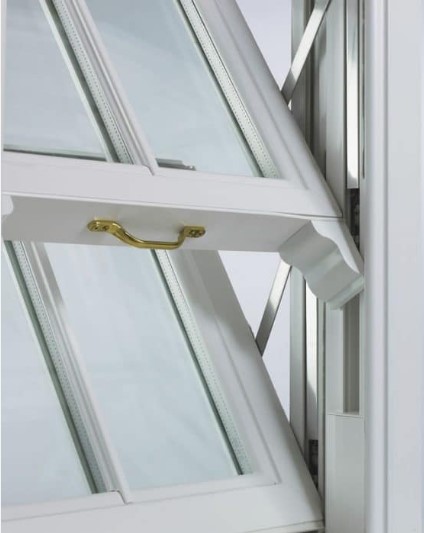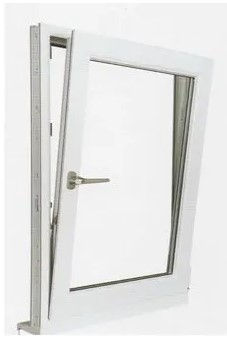Sash Window vs Tilt and Turn Window
Comparison Overview
When comparing Sash Window and Tilt and Turn Window, several key differences become apparent. In terms of cost, Sash Window are approximately 13% more expensive than Tilt and Turn Window, with average prices of £850 and £750 respectively. This price difference reflects variations in design complexity, materials, and installation requirements. For energy efficiency, Tilt and Turn Window offer better thermal performance with an efficiency rating of 0.0%, compared to Sash Window's 0.0%. This translates to potential differences in household energy savings. Tilt and Turn Window provide superior security features, which is an important consideration for homeowners concerned about safety. Sash Window typically have a lifespan of 20-25 years, while Tilt and Turn Window last approximately 25-30 years. Sash Window are particularly suitable for Period properties and Victorian and Georgian homes, while Tilt and Turn Window excel in Modern homes and High-rise apartments. Maintenance requirements vary between the two styles, with implications for long-term ownership costs and convenience. Your choice between these window types should ultimately depend on your specific needs, including budget constraints, energy efficiency goals, security requirements, aesthetics, and the architectural style of your property.
Sash Window

A traditional window style consisting of one or more movable panels (sashes) that slide vertically or horizontally in the frame.
Tilt and Turn Window

A versatile window that can be opened in two ways: tilted inward from the top for ventilation or turned inward from the side for full opening.
Average Price
£850
Sash Window
£750
Tilt and Turn Window
Energy Efficiency
0.0%
Sash Window
0.0%
Tilt and Turn Window
Security Rating
Medium
Sash Window
Very High
Tilt and Turn Window
Customer Rating
4.5/5
Sash Window
4.6/5
Tilt and Turn Window
Detailed Comparison
Features Comparison
Best Suited For
Sash Window Best For:
- Period properties
- Victorian and Georgian homes
- Conservation areas
- Traditional aesthetics
Tilt and Turn Window Best For:
- Modern homes
- High-rise apartments
- Areas with limited outside access
- Contemporary designs
Pros and Cons
Sash Window
Advantages:
- Traditional aesthetic
- No outward opening space required
- Good for period properties
- Available in various configurations
Disadvantages:
- More complex to manufacture
- Can be drafty in older designs
- Typically more expensive than casement
- Moving parts may require maintenance
Tilt and Turn Window
Advantages:
- Versatile opening options
- Excellent security and insulation
- Easy to clean both sides from inside
- Great ventilation control
- Modern appearance
Disadvantages:
- More complex mechanism
- Higher cost than standard designs
- Requires clearance space inside when fully open
Cost Comparison
The table below shows typical costs for Sash Window and Tilt and Turn Windowin different sizes. Prices include window and installation.
| Window Size | Sash Window | Tilt and Turn Window | Difference |
|---|---|---|---|
| Small (600 × 900mm) | £595 | £525 | Save £70 with Tilt and Turn Window |
| Medium (1000 × 1200mm) | £850 | £750 | Save £100 with Tilt and Turn Window |
| Large (1200 × 1500mm) | £1,105 | £975 | Save £130 with Tilt and Turn Window |
| Bay/Bow (Custom Size) | £2,125 | £1,875 | Save £250 with Tilt and Turn Window |
Additional Cost Considerations
Installation Complexity:
Sash Window windows typically require more work to install compared to Tilt and Turn Window windows, affecting labor costs.
Long-term Value:
Consider energy efficiency ratings and durability - Tilt and Turn Window windows offer better long-term energy savings.
Factors Affecting Price
Window Material Options
- uPVC: Most affordable option (1x base price)
- Aluminum: More expensive (1.5-2x base price)
- Timber: Premium option (2-3x base price)
Other Price Factors
- Glazing options (double vs triple)
- Security features and hardware quality
- Property access and installation difficulty
- Regional price variations (higher in London/SE)
Energy Efficiency & Performance
Sash Window Windows
Tilt and Turn Window Windows
Energy Efficiency Comparison Summary
Both window types offer similar energy efficiency ratings, but may have different strengths in terms of noise reduction, ventilation, and other factors.
About U-Values
U-value measures how well a window prevents heat from escaping. Lower numbers are better - a window with a U-value of 1.2 W/m²K loses less heat than one with 1.6 W/m²K.
Building regulations require new windows to have a U-value of 1.6 W/m²K or lower. Windows with values below 1.0 W/m²K offer excellent thermal performance but typically cost more.
Energy Savings Potential
| Property Type | Sash Window Annual Savings* | Tilt and Turn Window Annual Savings* |
|---|---|---|
| Small (1-2 bedroom flat) | £76 | £81 |
| Medium (3 bedroom house) | £121 | £130 |
| Large (4+ bedroom house) | £177 | £189 |
*Estimated annual savings when replacing single-glazed windows. Actual savings will vary based on your property's insulation, heating system, and local climate.
Maintenance & Lifespan
Sash Window Windows
Maintenance Requirements:
Medium-High - sliding channels require regular cleaning and lubrication
Tilt and Turn Window Windows
Maintenance Requirements:
Medium - mechanisms require occasional lubrication
Maintenance Comparison
| Maintenance Task | Sash Window | Tilt and Turn Window |
|---|---|---|
| Cleaning | 2-4 times per year | 2-4 times per year |
| Hardware Lubrication | Annually | Annually |
| Seal Inspection | Every 1-2 years | Every 1-2 years |
| Weather Stripping | Replace every 5-8 years | Replace every 5-8 years |
| Professional Service | Every 2-3 years | Every 2-3 years |
Maintenance Tips
Extending Window Lifespan
- Clean tracks and hinges regularly
- Use silicone spray on moving parts annually
- Check and replace weather stripping as needed
- Inspect and repair caulking to prevent leaks
Signs Windows Need Replacement
- Difficult to open or close
- Visible condensation between glass panes
- Drafts even when closed
- Rotting frames or water damage
Security & Safety Features
Sash Window Security Features
Common Security Features:
- Multi-point locking systems
- Reinforced frames for added strength
- Laminated or toughened safety glass options
- Internal beading to prevent glass removal
Tilt and Turn Window Security Features
Common Security Features:
- Multi-point locking systems
- Reinforced frames for added strength
- Laminated or toughened safety glass options
- Internal beading to prevent glass removal
Security Certifications to Look For
Secured by Design (SBD)
Police-backed initiative that certifies products meeting strict security standards.
BSI PAS 24
British Standards Institute certification for enhanced security performance requirements.
Safety Glass Options
Toughened Glass
Heat-treated to make it 4-5 times stronger than regular glass. If broken, it shatters into small, less dangerous pieces rather than sharp shards.
Laminated Glass
Contains a plastic interlayer that holds the glass together if broken. Offers higher security and better sound insulation than standard glass.
Ready to install new windows?
Compare quotes from approved window installers in your area